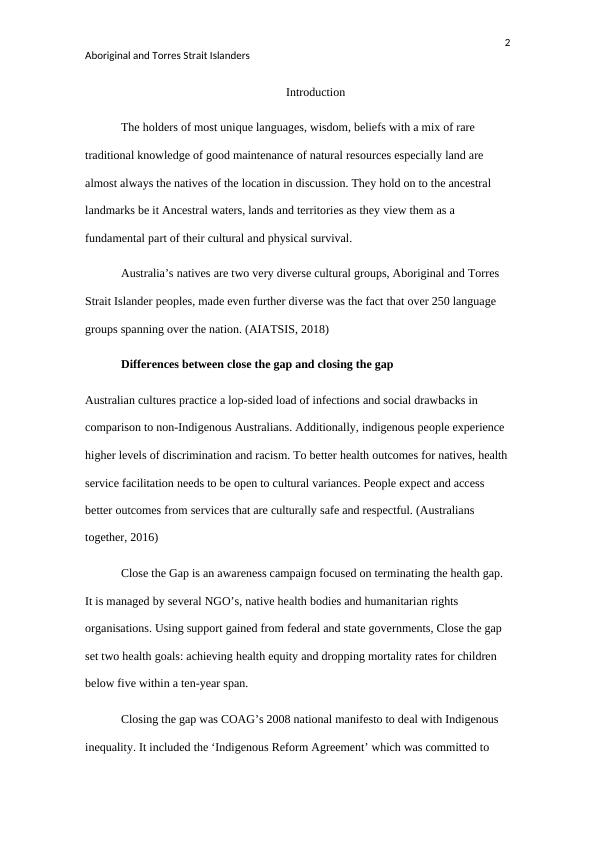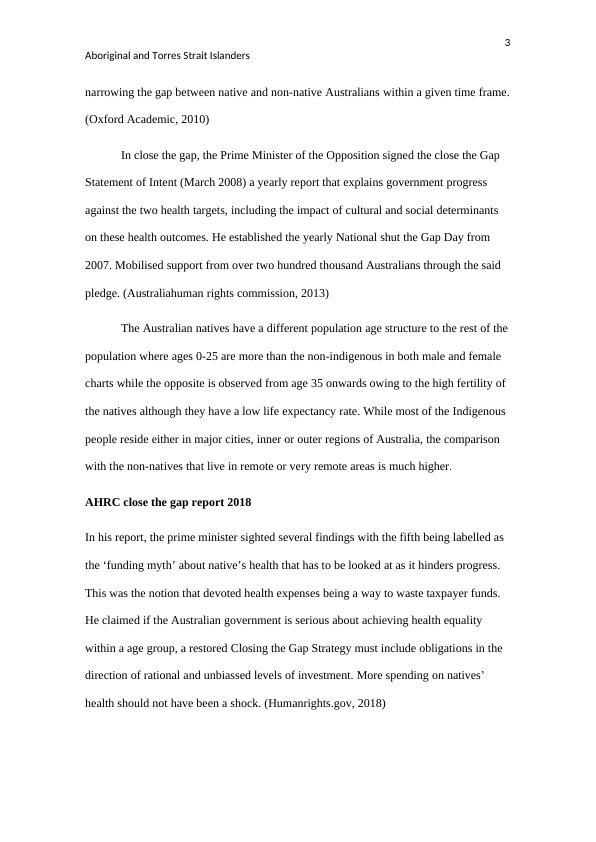Aboriginal and Torres Strait Islanders
Yatdjuligin (yarning in a good way) assessment task on Aboriginal and Torres Strait Islander peoples’ health and well-being.
8 Pages1920 Words53 Views
Added on 2023-03-23
About This Document
This document explores the unique cultures and challenges faced by Aboriginal and Torres Strait Islander peoples in Australia. It discusses the Close the Gap and Closing the Gap initiatives aimed at reducing health disparities. It also highlights the role of Aboriginal Hospital Liaison Officers in improving healthcare services. The document provides insights into the population age structure, healthcare expenditure, and the importance of cultural safety in delivering quality care.
Aboriginal and Torres Strait Islanders
Yatdjuligin (yarning in a good way) assessment task on Aboriginal and Torres Strait Islander peoples’ health and well-being.
Added on 2023-03-23
ShareRelated Documents
End of preview
Want to access all the pages? Upload your documents or become a member.
PUBH6000: Social, Behavioural and Cultural Factors in Public
|9
|2074
|26
Closing the Gap Strategy: A Governmental Approach to Achieve Health Equality
|17
|4482
|46
Aboriginal Nursing Assignment - NUR1201
|10
|2718
|56
PUBH6000: Social, Behavioural and Cultural Factors in Public Health
|9
|2045
|193
Close the Gap Policy in Australia: Challenges and Approaches
|9
|2037
|245
Assignment about Closing The Gap (CTG)
|9
|2421
|23



